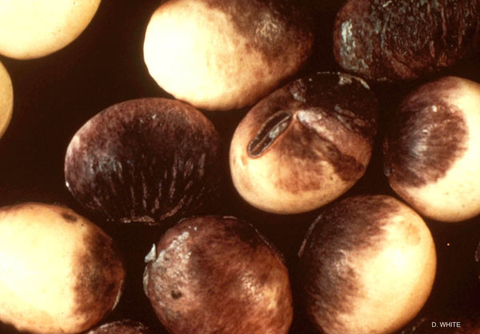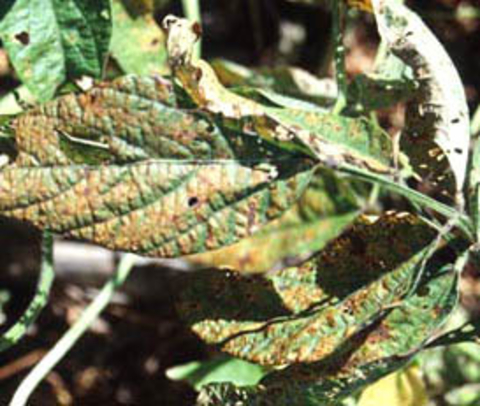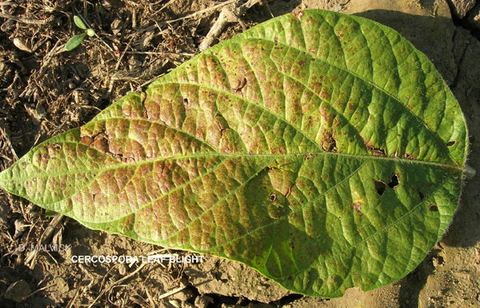Cercospora leaf blight most often occurs in southern areas of the U.S, but also occurs in the northern Midwest. The disease can cause severe defoliation of plants and reduce yields, especially in the southern U.S. Symptoms usually become apparent during seed set. Seeds on infected plants can develop purple seed stain.
Symptoms
The first symptom of Cercospora leaf blight is the development of light purple spots and areas on the top surface of leaves exposed to light. The discolored areas expand and deepen in color to a reddish-purple or bronze. The infected leaves appear leathery and 'sunburned'. Red-brown spots may develop on both leaf surfaces. The spots may coalesce to form large necrotic areas on leaves, which eventually results in defoliation of infected leaves in the upper canopy. Reddish-purple lesions may also occur on petioles, stems, and pods. Infected seeds have pink to purple discoloration on the seed coats.
Conditions and timing that favor disease
Infection and disease development is favored by high humidity and warm temperatures. Plants are susceptible from flowering to maturity.
Causal pathogen
Cercospora leaf blight is caused by the fungus Cercospora kikuchii. The pathogen overwinters on infested debris or seed. The same pathogen causes purple seed stain.
Disease management
Use pathogen-free seed and varieties with low susceptibility to Cercospora leaf blight. Rotation out of soybeans may be helpful, and foliar and seed treatment fungicides may be useful for managing this disease.
Reviewed in 2018





